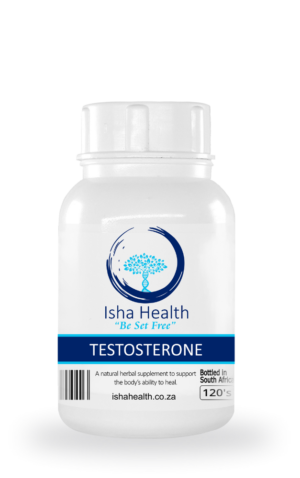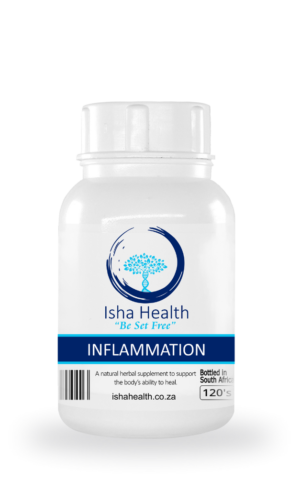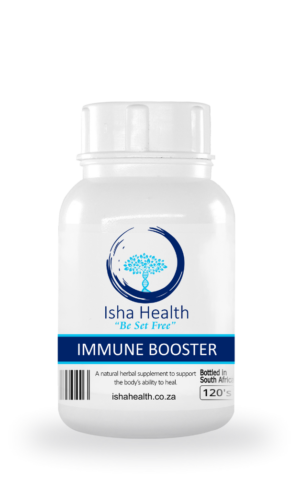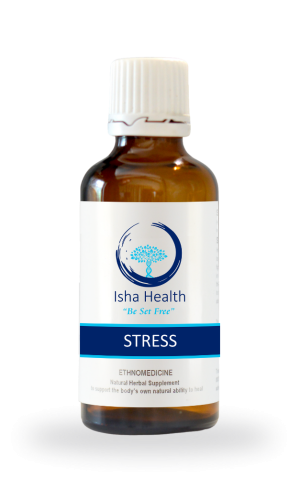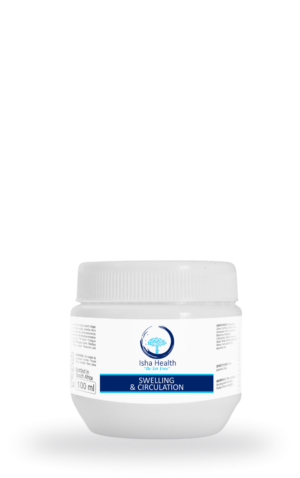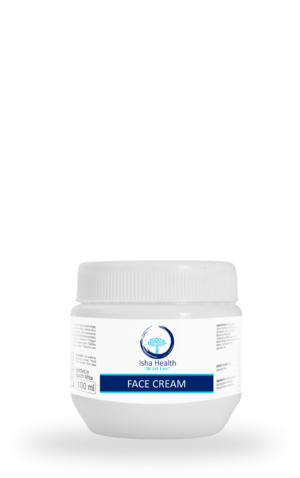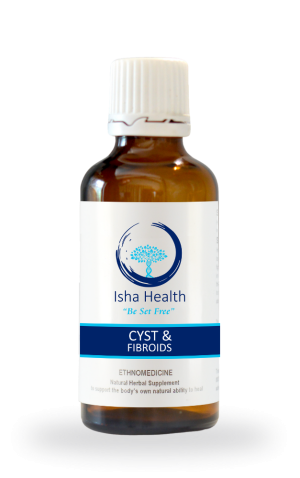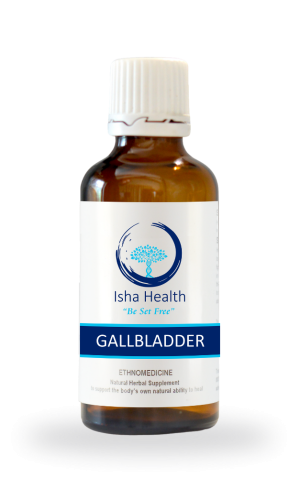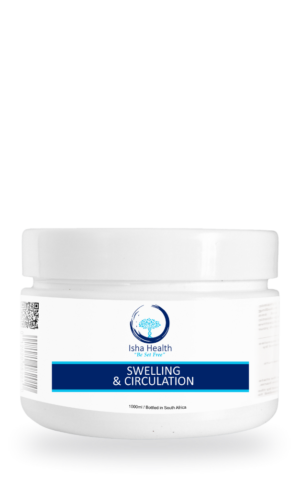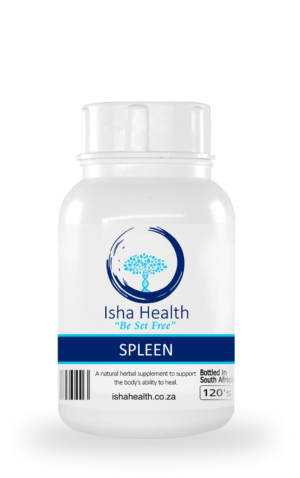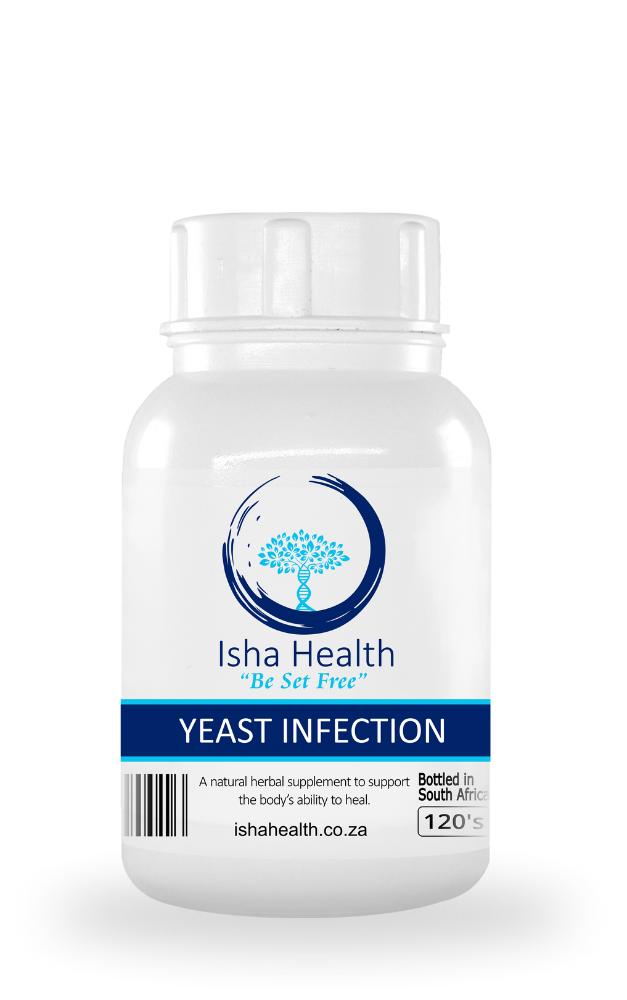
Yeast Infection
- 3-5 working days
- Hand-Made
- Manufactured in South Africa
- 100% Natural
- 100% Herbal products
- 100% Manufacturing Guarantee
Description
Directions for Use
Ingredients
Warning
Technical Information
Our Herbal Yeast Infection Supplement is designed to support your body’s natural balance and help manage Candida overgrowth. Each ingredient in this carefully formulated blend works together to promote a healthy environment within your body, making it less favourable for Candida to thrive.
By supporting immune function, aiding in toxin elimination, and providing essential nutrients, this supplement aims to address Candida-related symptoms and promote overall wellness.
2-4 x capsules 3x daily
20 minutes before meals.
Children over 6-12 years:
1x Capsule daily
Children over 12-16 years:
1x Capsule 3x daily according to age.
Alfalfa
Aloe Ferox
Buchu
Cryptolepsis
Dandelion
Devils Claw
Garlic
Hydrangea Root
Olive Leaf
Pau D’Arco
MSM
Tansy
Thyme
Turmeric
Walnut Shells
Other African Herbs
Aloe Ferox: Inhibits Candida growth by impeding germ tube formation and disrupting Candida biofilms. Supports immune function and digestive health, contributing to overall wellness and Candida control.
Buchu: Supports kidney function and aids in the removal of uric acid crystals, indirectly promoting toxin clearance crucial for Candida management. Contains compounds with potential antimicrobial properties, further aiding in Candida control.
Dandelion: Offers alkalizing and cleansing properties, potentially creating a less favourable environment for Candida. Stimulates digestive function and provides antioxidants that support immune function and combat oxidative stress.
Devil’s Claw: Reduces excessive acidity associated with Candida overgrowth, containing compounds with anti-inflammatory properties that may alleviate related symptoms.
Garlic: Inhibits Candida growth and contains antimicrobial compounds that support the body’s natural defense mechanisms against Candida overgrowth.
Hydrangea Root: Addresses elevated uric acid levels and supports toxin elimination through increased urine production, indirectly aiding in Candida management.
MSM (Methylsulfonylmethane): Maintains pH balance and supports detoxification processes, containing anti-inflammatory properties that may alleviate symptoms associated with Candida overgrowth.
Olive Leaf: Contains compounds with antimicrobial properties that disrupt Candida cell membranes, supporting immune function and combating oxidative stress.
Pau D’Arco: Exhibits robust antifungal properties and acts as an immune enhancer, contributing to Candida control and providing antioxidant and anti-inflammatory support.
Tansy: Contains compounds with anti-fungal properties and aids in acidity regulation and digestive fortification, supporting the body’s natural defense against Candida overgrowth.
Thyme: Recognized for its antifungal properties and antioxidants that support immune function and combat oxidative stress associated with Candida overgrowth.
Turmeric: Contains antimicrobial compounds that combat Candida overgrowth and support immune function, providing antioxidant protection against oxidative stress.
Walnut Shells: Contains juglone, a potent antifungal and anti-parasitic agent effective against Candida and parasites, supporting immune function and overall health.
Each of these ingredients plays a specific role in helping your body fight Candida. Some directly attack Candida, while others create an environment that makes it difficult for Candida to thrive. Together, they form a powerful team to tackle Candida overgrowth and related symptoms.
Not suitable for pregnant, breastfeeding women.
Candida is a type of yeast naturally present in our bodies, typically found in the mouth, throat, gut, and genital area. Normally, it coexists harmlessly with other microorganisms. However, under certain conditions, Candida can overgrow and cause health issues, a condition often referred to as Candidiasis. This overgrowth can lead to infections such as oral thrush, vaginal yeast infections, and gastrointestinal problems. Factors contributing to Candida overgrowth include weakened immune function, antibiotic use, hormonal changes, or a diet high in sugar and refined carbohydrates.
How does Candida work in the body?
Candida, a type of yeast, naturally resides in various parts of the body, including the mouth, throat, gut, and genital area. Under normal circumstances, it exists harmoniously with other microorganisms, such as bacteria, in the body’s microbiome. The microbiome plays a crucial role in maintaining overall health by regulating immune function, digestion, and nutrient absorption.
However, when the balance of the microbiome is disrupted, Candida can overgrow and lead to infections known as candidiasis. Several factors can contribute to this imbalance, including weakened immune function, antibiotic use, hormonal changes, or a diet high in sugar and refined carbohydrates.
Once Candida overgrowth occurs, it can spread throughout the body via various mechanisms. In the gastrointestinal tract, Candida can penetrate the intestinal lining, leading to a condition known as leaky gut syndrome. This allows Candida and its toxins to enter the bloodstream, where they can travel to other parts of the body and cause systemic symptoms.
In addition to direct invasion, Candida can also produce toxins and trigger inflammatory responses, further disrupting the body’s normal functions. Furthermore, Candida can form biofilms, which are protective layers that allow it to evade the immune system and resist treatment.
The presence of certain bacteria in the microbiome can also influence Candida growth. For example, some beneficial bacteria, such as lactobacilli, help keep Candida in check by competing for nutrients and producing antimicrobial substances. However, disruptions to the microbiome, such as antibiotic use, can reduce the levels of these beneficial bacteria, allowing Candida to proliferate.
Overall, the process of Candida overgrowth involves a complex interplay between the yeast itself, the body’s immune system, the microbiome, and various environmental factors. Addressing Candida overgrowth often requires restoring balance to the microbiome, supporting immune function, and addressing underlying factors contributing to the imbalance.
Can Candida affect the organs and systems in the body?
Candida overgrowth can affect various organs and systems in the body through both direct and indirect mechanisms. When Candida overgrowth occurs, it can lead to localized infections in specific organs, such as the mouth (oral thrush), vagina (vaginal yeast infections), and skin (cutaneous candidiasis). These infections can cause symptoms such as itching, burning, and discomfort.
In addition to localized infections, Candida overgrowth can also have systemic effects on the body. Candida can penetrate the intestinal lining, leading to a condition known as leaky gut syndrome. This allows Candida and its toxins to enter the bloodstream, where they can travel to other organs and tissues. Once in the bloodstream, Candida and its toxins can trigger inflammatory responses and immune reactions, potentially affecting multiple organs.
Systemic Candida overgrowth can manifest as a wide range of symptoms, including fatigue, brain fog, joint pain, and digestive issues. These symptoms can vary depending on the organs and systems affected. For example, Candida overgrowth in the gastrointestinal tract may cause symptoms such as bloating, gas, diarrhea, or constipation, while Candida overgrowth in the bloodstream may lead to more systemic symptoms such as fatigue and malaise.
Furthermore, Candida can produce toxins and trigger inflammatory responses, which can contribute to systemic inflammation and impact the function of various organs. Chronic inflammation associated with Candida overgrowth has been linked to conditions such as autoimmune diseases, cardiovascular disease, and neurological disorders.
Overall, Candida overgrowth can have a significant impact on organ function and overall health, highlighting the importance of addressing Candida overgrowth and restoring balance to the microbiome and immune system.
Causes of Candida Overgrowth:
Candida overgrowth occurs when there is a disruption in the balance of microorganisms in the body, allowing Candida yeast to proliferate unchecked. Several factors can contribute to this imbalance, creating an environment conducive to Candida overgrowth:
- Antibiotic Use: Antibiotics are medications used to kill harmful bacteria that cause infections. However, they can also disrupt the balance of beneficial bacteria in the body, such as those in the gut microbiome. When beneficial bacteria are depleted, Candida yeast can multiply rapidly, leading to overgrowth.
- Diet High in Sugar and Carbohydrates: Candida yeast feeds on sugars and carbohydrates, providing them with the fuel they need to grow and multiply. A diet high in sugar and refined carbohydrates can therefore promote Candida overgrowth by providing an abundant food source for the yeast.
- Weakened Immune System: A weakened immune system can compromise the body’s ability to control Candida yeast. Conditions such as HIV/AIDS, diabetes, and autoimmune diseases can weaken the immune system, making individuals more susceptible to Candida overgrowth.
- Hormonal Changes: Hormonal fluctuations, such as those occurring during pregnancy, menstruation, or menopause, can create an environment conducive to Candida overgrowth. Changes in hormone levels can alter the body’s pH balance and immune function, allowing Candida yeast to thrive.
- Stress: Chronic stress can weaken the immune system and disrupt the body’s natural balance, making it easier for Candida yeast to overgrow. Stress hormones such as cortisol can also increase blood sugar levels, providing additional fuel for Candida growth.
- Certain Medications: In addition to antibiotics, other medications can also contribute to Candida overgrowth. These may include corticosteroids, which suppress the immune system, and oral contraceptives, which can alter hormone levels and increase susceptibility to yeast infections.
- Underlying Health Conditions: Certain underlying health conditions, such as obesity, gastrointestinal disorders, and autoimmune diseases, can create an environment conducive to Candida overgrowth. These conditions may disrupt the body’s natural defenses and compromise immune function, allowing Candida yeast to proliferate.
Overall, Candida overgrowth is typically the result of a combination of factors rather than a single cause. Addressing Candida overgrowth often requires addressing these underlying factors, restoring balance to the microbiome, and supporting immune function to prevent recurrence.
Dangers of Candida Overgrowth:
Candida overgrowth can pose several potential dangers to overall health and well-being, affecting various aspects of the body’s functioning:
- Localized Infections: Candida overgrowth can lead to localized infections in areas such as the mouth (oral thrush), vagina (vaginal yeast infections), and skin (cutaneous candidiasis). These infections can cause discomfort, itching, and inflammation.
- Systemic Infections: In severe cases, Candida overgrowth can lead to systemic infections, where the yeast spreads throughout the body via the bloodstream. Systemic candidiasis can affect multiple organs and tissues, leading to serious complications such as sepsis, a life-threatening condition characterized by an overwhelming immune response to infection.
- Gastrointestinal Issues: Candida overgrowth in the gastrointestinal tract can lead to symptoms such as bloating, gas, diarrhea, or constipation. It can also contribute to conditions such as leaky gut syndrome, where the intestinal lining becomes permeable, allowing toxins and undigested food particles to enter the bloodstream and trigger inflammatory responses.
- Immune Dysfunction: Chronic Candida overgrowth can impair immune function, making individuals more susceptible to infections and other health issues. Candida produces toxins that can suppress the immune system and interfere with its ability to mount an effective defense against pathogens.
- Nutritional Deficiencies: Candida overgrowth can interfere with nutrient absorption in the gastrointestinal tract, leading to deficiencies in essential vitamins and minerals. This can further compromise immune function and overall health.
- Chronic Inflammation: Candida overgrowth can trigger chronic inflammation in the body, contributing to the development of conditions such as autoimmune diseases, cardiovascular disease, and neurological disorders. Chronic inflammation can also exacerbate symptoms associated with Candida overgrowth, such as fatigue, joint pain, and brain fog.
- Mental Health Issues: Some research suggests that Candida overgrowth may be associated with mental health issues such as anxiety, depression, and cognitive dysfunction. The exact mechanisms underlying this relationship are not fully understood but may involve the impact of Candida toxins on neurotransmitter function and inflammation in the brain.
Overall, Candida overgrowth can have far-reaching effects on health and well-being, highlighting the importance of addressing the underlying causes and restoring balance to the body’s microbiome and immune system.
Oral Thrush – oral candidiasis:
Oral thrush, also known as oral candidiasis, is a common manifestation of Candida overgrowth in the mouth. It occurs when there is an imbalance of microorganisms in the oral cavity, allowing Candida yeast to proliferate and cause infection. While oral thrush is not typically life-threatening, it can pose several dangers and discomforts:
- Discomfort and Pain: Oral thrush often presents as white, creamy lesions on the tongue, inner cheeks, gums, or roof of the mouth. These lesions can cause discomfort, pain, and a burning sensation, particularly when eating or drinking.
- Difficulty Eating and Swallowing: Severe cases of oral thrush can make eating and swallowing difficult due to the presence of lesions and discomfort in the mouth. This can lead to reduced food intake, dehydration, and malnutrition, particularly in vulnerable populations such as infants, elderly individuals, or those with weakened immune systems.
- Risk of Systemic Infection: While oral thrush typically remains localized in the mouth, it can potentially spread to other parts of the body, leading to systemic candidiasis. In individuals with compromised immune function, such as those with HIV/AIDS or undergoing chemotherapy, oral thrush may serve as a portal of entry for Candida yeast into the bloodstream, increasing the risk of systemic infection and sepsis.
- Complications in Infants: Oral thrush is relatively common in infants, particularly those who are breastfed or use pacifiers. While it is usually mild and resolves with appropriate treatment, untreated oral thrush in infants can lead to discomfort during feeding, poor weight gain, and potential transmission of Candida to the mother’s nipples, leading to nipple thrush.
- Underlying Health Conditions: Oral thrush can sometimes be a sign of underlying health conditions, such as diabetes, HIV/AIDS, or immunodeficiency disorders. Therefore, diagnosing and treating oral thrush promptly is essential to identify and address any underlying medical issues.
Overall, while oral thrush is generally treatable with antifungal medications, it is essential to address the underlying causes of Candida overgrowth to prevent recurrence and potential complications. Maintaining good oral hygiene, avoiding risk factors such as prolonged antibiotic use or high sugar intake, and managing underlying health conditions are essential steps in preventing oral thrush and its associated dangers.
Dietary and lifestyle changes to prevent and eliminate Candida overgrowth:
To prevent and eliminate Candida overgrowth and thrush, dietary and lifestyle changes are essential:
- Reduce Sugar Intake: Limit consumption of sugary foods and beverages, as Candida feeds on sugar and thrives in high-sugar environments.
- Avoid Processed Foods: Processed and refined foods often contain hidden sugars and can disrupt the balance of gut bacteria, promoting Candida overgrowth.
- Consider Dairy Limitation: Some individuals find that dairy products worsen Candida symptoms due to their lactose content. Consider reducing or eliminating dairy consumption if symptoms persist.
- Moderate Fruit Consumption: While fruits are nutritious, opt for low-sugar options like berries and limit intake of high-sugar fruits such as grapes and watermelon.
- Limit Gluten: Gluten-containing grains can irritate the gut lining and contribute to Candida overgrowth. Choose gluten-free alternatives like quinoa, rice, and oats.
- Minimize Alcohol: Alcohol disrupts gut flora and weakens the immune system, making the body more susceptible to Candida overgrowth. Limit alcohol consumption, especially during treatment.
- Watch Starchy Foods: Reduce intake of refined carbohydrates and starches, which quickly convert to sugar in the body and fuel Candida growth.
- Be Mindful of Fermented Foods: While beneficial for many, fermented foods can worsen Candida symptoms in some individuals due to their microbial content. Monitor your response to fermented foods and adjust consumption accordingly.
- Moderate Caffeine Intake: High caffeine consumption can weaken the immune system and disrupt gut health, potentially exacerbating Candida issues.
- Use Antibiotics Judiciously: Antibiotics disrupt the balance of gut bacteria, increasing the risk of Candida overgrowth. Use antibiotics only when necessary and consider probiotic supplementation afterward.
- Manage Stress: Chronic stress weakens the immune system and affects gut health, creating an environment favorable for Candida overgrowth. Practice stress-reducing techniques such as meditation, yoga, or deep breathing exercises.
- Increase Dietary Fiber: Consume plenty of fiber-rich foods like vegetables, fruits, and whole grains to support digestive health and create an environment less conducive to Candida proliferation.
By implementing these dietary and lifestyle changes, you can help prevent and eliminate Candida overgrowth and thrush, promoting overall health and well-being.
Ingredients which are traditionally used for this disorder
Technical info:
Alfalfa: Alfalfa contains Vitamin B12, which helps balance acidity levels in the body, creating an environment less conducive to Candida overgrowth. Vitamin B12 is crucial for maintaining healthy nerve cells and DNA synthesis. Additionally, alfalfa is rich in nutrients such as calcium, magnesium, and potassium, which support overall health and may contribute to immune function, indirectly aiding in Candida management.
Aloe Ferox: Aloe Ferox inhibits Candida growth by impeding germ tube formation, a crucial step in yeast’s virulence. It also disrupts Candida biofilms, which protect the yeast from immune system attack and antifungal treatments. Aloe Ferox enhances immune function through its ability to bolster white blood cell activity. Its natural laxative effect aids in toxin elimination, while gall flow stimulation supports overall digestive health, indirectly contributing to Candida control.
Buchu: Buchu supports kidney function, aiding in the removal of uric acid crystals, which are associated with conditions like gout and can contribute to Candida overgrowth. By promoting kidney function, buchu indirectly supports toxin clearance, crucial for Candida management. Buchu contains diosphenol and other compounds with potential antimicrobial properties, further aiding in Candida control.
Dandelion: Dandelion offers alkalizing and cleansing properties, potentially creating an environment less favorable for Candida. Its bitter principles stimulate digestive function, including bile production, which aids in fat digestion and toxin elimination. Dandelion is also rich in antioxidants, including vitamins A and C, which support immune function and may help combat oxidative stress associated with Candida overgrowth.
Devil’s Claw: Devil’s Claw reduces excessive acidity, particularly in cases with elevated uric acid levels, which can contribute to Candida-associated symptoms like joint pain and inflammation. It contains iridoid glycosides and harpagosides, which have anti-inflammatory properties and may help alleviate pain and discomfort associated with Candida overgrowth.
Enzymes: Enzymes play a vital role in immune enhancement, converting oleuropein into elolenic acid, which reinforces the body’s ability to combat various pathogens, including yeast fungi. Enzymes also aid in the breakdown and digestion of food, supporting overall digestive health and nutrient absorption, which is essential for optimal immune function.
Garlic: Garlic’s primary component, allicin, inhibits Candida growth and prevents the proliferation of Candida albicans, the predominant yeast species responsible for yeast infections. Allicin disrupts the yeast cell membrane and inhibits enzyme activity essential for yeast survival. Garlic also contains sulfur compounds such as diallyl disulfide and diallyl trisulfide, which have antimicrobial properties and may help combat Candida overgrowth.
Hydrangea Root: Hydrangea Root addresses elevated uric acid levels, which can contribute to inflammatory responses and immune dysfunction associated with Candida overgrowth. It contains hydrangin, a compound with potential diuretic properties, aiding in the elimination of toxins through increased urine production. Hydrangea root may also help prevent kidney stones by inhibiting the formation of calcium oxalate crystals.
MSM (Methylsulfonylmethane): MSM helps maintain pH balance by neutralizing excess acidity in the body, indirectly creating an environment less favourable for Candida overgrowth. It also supports detoxification processes by enhancing liver function and aiding in the removal of toxins from the body. Additionally, MSM has anti-inflammatory properties, which may help alleviate symptoms associated with Candida overgrowth, such as joint pain and inflammation.
Olive Leaf: Olive leaf extract contains oleuropein, a potent antimicrobial compound with antiviral, antibacterial, and antifungal properties. Oleuropein disrupts the cell membrane of Candida, leading to cell death and inhibiting its growth and reproduction. Olive leaf extract also contains hydroxytyrosol, a powerful antioxidant that helps combat oxidative stress associated with Candida overgrowth and supports immune function.
Pau D’Arco: Pau D’Arco, rich in lapachol, exhibits robust antifungal properties and acts as an immune enhancer, contributing to Candida control. Lapachol disrupts the cell wall of Candida, leading to cell death and inhibiting its growth and reproduction. Pau D’Arco also contains quercetin and other flavonoids, which have antioxidant and anti-inflammatory properties that support immune function and may help alleviate symptoms associated with Candida overgrowth.
Red Clover: Red clover aids in toxin elimination from the liver, blood, and lymph, supporting overall detoxification processes essential for Candida management. It contains phytoestrogens, including isoflavones such as genistein and daidzein, which have estrogenic effects and may help balance hormone levels associated with Candida overgrowth. Red clover also contains coumarins and flavonoids, which have antioxidant and anti-inflammatory properties that support immune function and overall health.
Sutherlandia: Sutherlandia demonstrates antifungal properties and is effective in treating various conditions, including Candida. It contains saponins, flavonoids, and alkaloids, which have immune-modulating properties and may help enhance the body’s ability to combat Candida overgrowth. Sutherlandia also contains canavanine, an amino acid with potential antifungal properties that may help inhibit the growth and reproduction of Candida.
Tansy: Tansy contains thujone, known for its anti-fungal properties, making it effective against Candida. It also possesses bitter compounds, including sesquiterpene lactones such as parthenolide, which aid in acidity regulation and digestive fortification by stimulating digestive secretions and promoting bile flow. Tansy also contains volatile oils such as camphor and borneol, which have antimicrobial properties that may help combat Candida overgrowth.
Thyme: Thyme is recognized for its antifungal properties, attributed to its essential oil components such as thymol and carvacrol. These compounds disrupt the cell membrane of Candida, leading to cell death and inhibiting its growth and reproduction. Thyme also contains flavonoids and phenolic acids, which have antioxidant and anti-inflammatory properties that support immune function and overall health.
Turmeric: Turmeric’s alkaline nature and anti-inflammatory properties are advantageous in addressing yeast infections. Curcumin, the active compound in turmeric, has potent antimicrobial properties that help combat Candida overgrowth. It also supports immune function by modulating inflammatory responses and enhancing the activity of immune cells. Additionally, turmeric contains volatile oils such as turmerone and atlantone, which have antioxidant properties that help combat oxidative stress associated with Candida overgrowth.
Walnut Shells: The husk of walnut shells contains juglone, a potent antifungal and anti-parasitic agent effective against Candida and parasites. Juglone disrupts the cell membrane of Candida, leading to cell death and inhibiting its growth and reproduction. Walnut shells also contain tannins and flavonoids, which have antioxidant properties that support immune function and overall health.

